 W
WDespite being neutral, the Netherlands was invaded by Nazi Germany on 10 May 1940, as part of Fall Gelb. On 15 May 1940, one day after the bombing of Rotterdam, the Dutch forces surrendered. The Dutch government and the royal family saved themselves by fleeing the country and going to London. Princess Juliana and her children moved on to Canada for additional safety.
 W
WThe 2 1⁄2-cent coin minted in the Netherlands during World War II was made of zinc, and worth 1⁄40, or .025, of the Dutch guilder. It was designed by Nico de Haas, a Dutch national-socialist, and struck in 1941 and 1942.
 W
WThe zinc 5-cent coin was minted in the Netherlands between 1941 and 1943 during World War II. It was worth 1/20, or .05, of the guilder, and designed by Nico de Haas, a Dutch national-socialist.
 W
WThe zinc 10-cent coin was minted in the Netherlands between 1941 and 1943 during World War II. It was worth 1/10, or .10, of the guilder, and designed by Nico de Haas, a Dutch national-socialist. The respective mintage was of 29,800,000 (1941), 95,600,000 (1942), 29,000,000 (1943).
 W
WThe 25-cent piece was the highest-denomination coin minted in the Netherlands during World War II. Struck between 1941 and 1943, the 25-cent coin was worth 1/4, or 0.25, of a Dutch guilder. It was made entirely of zinc, and designed by Nico de Haas, a Dutch national-socialist. The respective mintage was of 34,600,000 (1941), (1942), 13,600,000 (1943).
 W
WThe 1945 shooting on Dam square took place during the liberation of Amsterdam on 7 May 1945, in the last days of World War II in Europe. German soldiers fired machine guns into a large crowd gathered on Dam square to celebrate the end of the war, killing over 30 people.
 W
WThe Airborne Museum ‘Hartenstein’ in Oosterbeek, The Netherlands is dedicated to the Battle of Arnhem in which the Allied Forces attempted to form a bridgehead on the northern banks of the Rhine river in September 1944. Hartenstein served as the headquarters of the British 1st Airborne Division. In the museum an extensive and diverse collection is displayed consisting of original weaponry, genuine uniforms and equipment used in the battle. The numerous photos and films on display provide a realistic picture which is enhanced by interviews with Allied soldiers. In addition the museum has an award-winning Airborne Experience exhibition, that depicts the area around Arnhem and Oosterbeek during the battle. The museum also provides German and civilian perspectives.
 W
WThe bombing of the Bezuidenhout took place on 3 March 1945, when the Royal Air Force mistakenly bombed the Bezuidenhout neighbourhood in the Dutch city of The Hague. At the time, the neighbourhood was more densely populated than usual with evacuees from The Hague and Wassenaar; tens of thousands were left homeless and had to be quartered in the Eastern and Central Netherlands.
 W
WThe Dronrijp Reprisals were carried out by the German Sicherheitsdienst in the Dutch town of Dronrijp on 11 April 1945. 14 prisoners, including 11 members of the Dutch resistance, were shot in reprisal for the sabotage of a rail line.
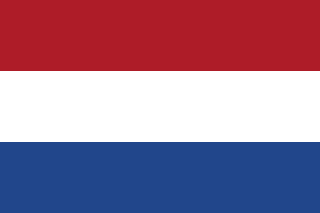 W
WThe Dutch government in exile, also known as the London Cabinet, was the government in exile of the Netherlands, headed by Queen Wilhelmina, that evacuated to London after the German invasion of the country during World War II on 10 May 1940.
 W
WThe Dutch resistance to the Nazi occupation of the Netherlands during World War II can be mainly characterized as non-violent. The primary organizers were the Communist Party, churches, and independent groups. Over 300,000 people were hidden from German authorities in the autumn of 1944 by 60,000 to 200,000 illegal landlords and caretakers. These activities were tolerated knowingly by some one million people, including a few individuals among German occupiers and military.
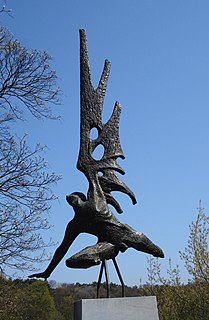 W
WEnglandspiel, or Operation North Pole, was a successful counter intelligence operation of the Abwehr from 1942 to 1944 during World War II. German forces captured Allied resistance agents operating in the Netherlands and used the agents' codes to dupe the United Kingdom's clandestine organization, the Special Operations Executive (SOE), into continuing to infiltrate agents, weapons, and supplies into the Netherlands. The Germans captured nearly all the agents and weapons sent by the United Kingdom (Britain).
 W
WThe February Strike was a general strike in the German-occupied Netherlands in 1941, during World War II, organized by the then-outlawed Communist Party of the Netherlands in defence of persecuted Dutch Jews and against the anti-Jewish measures and activities of the Nazis in general.
 W
WThe Free Dutch Forces refers to the Dutch military formations of the Dutch government-in-exile and its colonies that were formed to fight alongside the Western Allies against Nazi Germany and its allies during World War II following the Dutch surrender in May 1940.
 W
WThe Second De Geer cabinet, also called the First London cabinet was the cabinet of the Netherlands from 10 August 1939 until 3 September 1940. The cabinet was formed by the political parties Roman Catholic State Party (RKSP), Social Democratic Workers' Party (SDAP), Anti-Revolutionary Party (ARP), Christian Historical Union (CHU) and the Free-thinking Democratic League (VDB) following the dismissal of the Fifth Colijn cabinet by Queen Wilhelmina on 27 July 1939. The national unity government became a War cabinet on 14 May 1940 following the German invasion and fled to London. The government-in-exile was dismissed by Queen Wilhelmina on 26 August 1940.
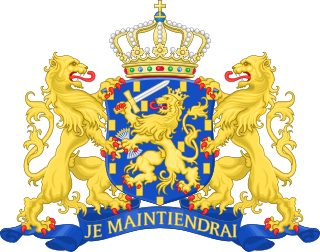 W
WThe First Gerbrandy cabinet, also called the Second London cabinet was the executive branch of the Dutch government-in-exile from 3 September 1940 until 27 July 1941. The War cabinet was formed by the christian-democratic Roman Catholic State Party (RKSP), Anti-Revolutionary Party (ARP) and Christian Historical Union (CHU), the social-democratic Social Democratic Workers' Party (SDAP), the social-liberal Free-thinking Democratic League (VBD) and the conservative-liberal Liberal State Party (LSP) after the resignation of the previous Cabinet De Geer II. The national unity government (War cabinet) was the second of four war cabinets of the government-in-exile in London during World War II.
 W
WThe Second Gerbrandy cabinet, also called the Third London cabinet was the Dutch government-in-exile from 27 July 1941 until 23 February 1945. The cabinet was formed by the political parties Roman Catholic State Party (RKSP), Social Democratic Workers' Party (SDAP), Anti-Revolutionary Party (ARP), Christian Historical Union (CHU), Free-thinking Democratic League (VDB) and the Liberal State Party (LSP) following the resignation of First Gerbrandy cabinet on 12 June 1941. The national unity government (War cabinet) was the third of four war cabinets of the government-in-exile in London during World War II.
 W
WThe Third Gerbrandy cabinet, also called the Fourth London cabinet was the Dutch government-in-exile from 23 February 1945 until 25 June 1945. The cabinet was formed by the political parties Roman Catholic State Party (RKSP), Anti-Revolutionary Party (ARP) and the Free-thinking Democratic League (VDB) following the resignation of Second Gerbrandy cabinet on 27 January 1945. The national unity government (War cabinet) was the last of four war cabinets of the government-in-exile in London during World War II.
 W
WThe German bombing of Rotterdam, also known as the Rotterdam Blitz, was the aerial bombardment of Rotterdam by the Luftwaffe on 14 May 1940, during the German invasion of the Netherlands in World War II. The objective was to support the German troops fighting in the city, break Dutch resistance and force the Dutch army to surrender. Almost the entire historic city centre was destroyed, nearly 900 people were killed and 85,000 more were left homeless.
 W
WThe Germanic SS was the collective name given to paramilitary and political organisations established in parts of German-occupied Europe between 1939 and 1945 under the auspices of the Schutzstaffel (SS). The units were modeled on the Allgemeine SS in Nazi Germany and established in Belgium, Denmark, the Netherlands, and Norway whose populations were considered in Nazi ideology to be especially "racially suitable". They typically served as local security police augmenting German units of the Gestapo, Sicherheitsdienst (SD), and other departments of the German Reich Main Security Office.
 W
WThe Grebbe Line was a forward defence line of the Dutch Water Line, based on inundation. The Grebbe Line ran from the Grebbeberg in Rhenen northwards until the IJsselmeer.
 W
WGroup 2000 was a Dutch resistance group during the Second World War in the Amsterdam area and remained virtually unknown for 70 years. The Group was founded in 1940 and was led by Ms. Jacoba van Tongeren during the entire war. For the duration of the Second World War she provided food coupons for around 4,500 people in hiding. Group 2000 had more than 140 members who, together with the people in hiding, remained invisible during the war, and also afterwards, through the use of 4-number codenames. This changed only in 2015, after the book ‘Jacoba van Tongeren and the unknown resistance heroes of Group 200’ was published.
 W
WMaria Catharina van Grunsven (1918–2004), also known as Riet van Grunsven or Riet van de Haterd-van Grunsven, was an armed member of the Dutch Resistance during World War II. One of 21 people who became “line crossers,” special agents who helped to maintain a secret connection between occupied and liberated Netherlands across the waterways of the Biesbosch and the Merwede, she operated as a courier for part of the larger Biesbosch resistance group, and the Albrecht intelligence group. During this resistance work, she was given the aliases “Ice Block” and “Trouble.”
 W
WHouen zo! is a 1953 Dutch short documentary film directed by Herman van der Horst about the reconstruction of Rotterdam, following the city's destruction by the Nazis in the Rotterdam Blitz.
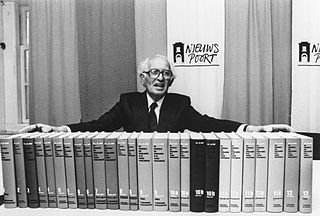 W
WThe Kingdom of the Netherlands During World War II is the standard reference on the history of the Netherlands during World War II. The series was written by Loe de Jong (1914–2005), director of the Dutch Institute for War Documentation, and was published between 1969 and 1991. The series contains 14 volumes, published in 29 parts. De Jong was commissioned to write the work in 1955 by the Ministry of Education, Culture and Science. The first volume appeared in 1969, and de Jong wrote his last in 1988. The final volume, containing critique and responses, appeared in 1991.
 W
WOperation Manna and Operation Chowhound were humanitarian food drops, carried out to relieve a famine in German-occupied Netherlands, undertaken by Allied bomber crews during the final days of World War II in Europe.
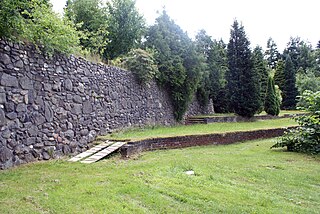 W
WThe Muur van Mussert is all that remains of a rally ground with buildings and monuments planned by Anton Mussert and his National Socialist Movement in the Netherlands (NSB) to house party meetings and hold national events to celebrate national-socialist thought in the Netherlands. The wall was built in 1938, on a plot of land the NSB had acquired near Lunteren in Gelderland, in the east of the country, and was inspired by the Nazi party rally grounds in Nuremberg.
 W
WThe NIOD Institute for War, Holocaust and Genocide Studies is an organisation in the Netherlands which maintains archives and carries out historical studies into the Second World War, the Holocaust and other genocides around the world, past and present. The institute was founded as a merger of the Netherlands Institute for War Documentation and the Center for Holocaust and Genocide Studies (CHGS).
 W
WRadio Oranje was a Dutch radio programme on the BBC European Service broadcast to the German-occupied Netherlands during World War II. It was transmitted from London and broadcast programmes of approximately 15 minutes. It consisted of brief commentaries on current affairs and political speeches, as well as news on the Free Dutch forces, colonies, and merchant navy. It was distinct from the BBC's own Dutch Service which only broadcast news programmes and which, unlike Radio Oranje, was not controlled by the Dutch government in exile.
 W
WWilhelm (Willi) Friedrich Adolf Ritterbusch, was a German National Socialist German Workers' Party (NSDAP-NaziParty) political functionary. Among other positions, he was the German Generalkommissar zur Besonderen Verwendung, directing the political affairs and propaganda in the occupied Netherlands from the middle of July 1943 until 7 May 1945, the end of World War II.
 W
WWhile the Germans occupied the Netherlands during the Second World War (1940–1945), Allied air forces carried out a number of operations over Rotterdam and the surrounding region. These included bombing strategic installations, leaflet dropping, and during the last week of the war, the dropping of emergency food supplies.
 W
WFrançois van 't Sant was a Dutch head-commissioner of police, leading intelligence figure and confidant of Queen Wilhelmina and other members of the Dutch Royal House of Orange-Nassau. In both World War I and World War II he played a key role in combined Dutch-British intelligence operations.
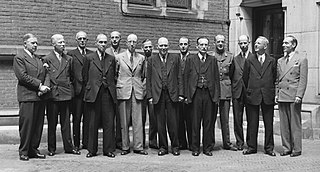 W
WThe Schermerhorn–Drees cabinet was the executive branch of the Dutch Government from 25 June 1945 until 3 July 1946. The cabinet was formed by the christian-democratic Roman Catholic State Party (RKSP), the social-democratic Social Democratic Workers' Party (SDAP) and the social-liberal Free-thinking Democratic League (VDB) by royal decree following the end of World War II. The cabinet was a provisional centrist grand coalition and had a substantial majority in the House of Representatives with prominent civil engineer Willem Schermerhorn of the Free-thinking Democratic League serving as Prime Minister. Social Democratic Leader Willem Drees served as Deputy Prime Minister and Minister of Social Affairs.
 W
WFritz Schmidt was the German Commissioner-General for Political Affairs and Propaganda in the occupied Netherlands between 1940 and 1943, one of four assistants to the Governor-General, Arthur Seyss-Inquart.
 W
WOtto Schumann was a German SS and police general during the Nazi era. He was born in Metz, Lorraine, on 11 September 1886. During the First World War, he served in the German Army as an officer. After the war, he became a police officer. Otto Schumann joined the NSDAP in 1933 and the SS in 1939.
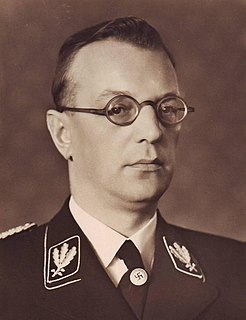 W
WArthur Seyss-Inquart was an Austrian Nazi politician who served as Chancellor of Austria in 1938 for two days, before the annexation of Austria by Nazi Germany.
 W
WHenri Gerard Winkelman was a Dutch military officer who served as Commander-in-chief of the Armed forces of the Netherlands during the German invasion of the Netherlands.